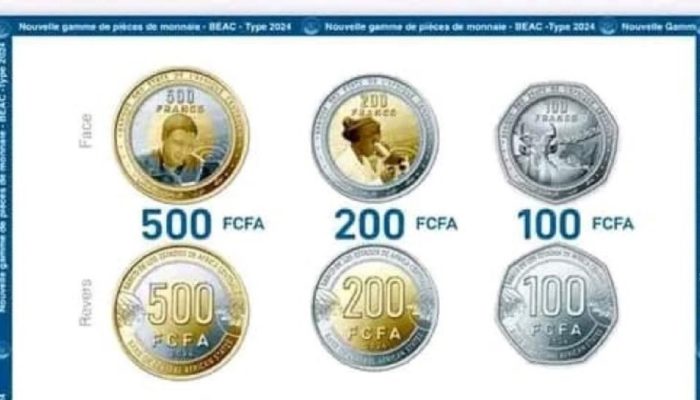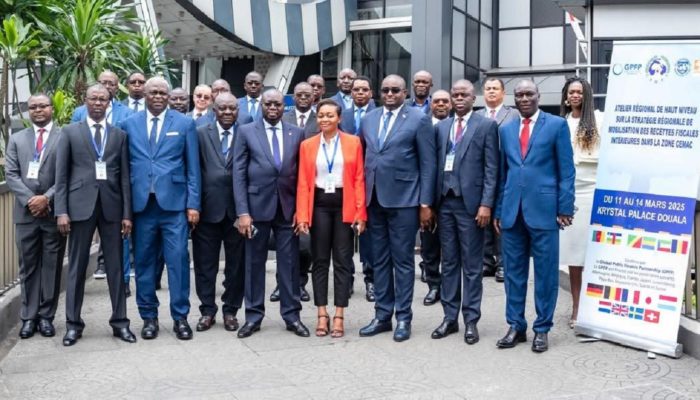In a hot chestnut situation, Central African sub region must find a tourniquet to stop the economic bleeding. The subregion will not survive prolonged containment. Mamadou Malick Bal of the ECA Central Africa Office examines the tracks of economic recovery for the sub-region. He defends his views in this interview.
Mr. Mamadou Malick Bal, the ECA report on deconfinement strategies in Africa has just been published. Faithful to its position as promoter of the knowledge economy in Africa, ECA provides the keys to succeed in the “new normal”. Central African countries have diverse fortunes in the response to the disease and its effects. How do you assess their governance of the crisis in a context of relative data reliability?
First of all, allow me to salute the efforts made by all the countries of the subregion to combat COVID-19. Indeed, as you know, the COVID-19 pandemic hit Central Africa at a time when the sub-region was still recovering from a serious economic crisis caused by the oil price shock of 2014. The slowdown growth in the rest of the world, particularly in China, where the pandemic started, has resulted in lower demand for many Central African export products including oil, which has slowed activity economic. According to initial estimates by ECA, the pandemic could have a negative impact equivalent to 4.1% of the GDP of Central Africa. But that figure may turn out to be too optimistic as the full impact of the pandemic is not yet clear.

Despite this, Central African countries quickly gave top priority to limit the transmission of COVID-19. All governments in the subregion have taken steps to curb the spread of Covid-19. These measures range from the ban on entry for travellers from foreign countries, mainly those at high risk, the closure of land, air and sea borders to people, except essential goods, the cancellation of gatherings crowd, as well as encouraging social distancing. Partial or total containment measures include closing schools, universities, restaurants, and cancelling public and private events.
We are delighted that measures have been taken at the sub-regional level to combat COVID-19. I am referring here to the extraordinary session of the PREF / CEMAC Steering Committee which took place in Brazzaville on March 28, 2020 and whose objective was to take measures to respond to the disease. The Ministers in charge of the economy, finance and integration of CEMAC have adopted several measures, among which include: the increase in appropriations allocated to health expenditure; reallocating funds allocated to non-priority public spending towards strengthening the health system for more effective care of infected people.
Furthermore, the ministers decided to maintain the free movement of essential goods and health personnel in the fight against COVID-19.
Thus, on the whole, the governments of the subregion are doing their best with the means available to deal with the crisis, in particular given its new and suffered character which has also put the most disadvantaged economies in great difficulty. advanced.
Several countries in the subregion are threatened by increasing poverty. The economic structure of these countries shows that a large segment of the population depends on the small economy and the informal sector. In the absence of an effective system of social safety nets, what mechanism could be used to build the resilience of the poor?
You are right to approach the issue of poverty. The first thing to know is that although extreme poverty has decreased in Central Africa, it still affects a significant proportion of the population. The necessary measures that have been taken to slow the spread of the coronavirus, unfortunately, have a direct cost for a large part of the population of Central Africa, whose livelihoods depend largely on the informal economy. Indeed, the informal economy in Central Africa is the main source of employment.
The legitimate concerns of the governments of the countries of the subregion about the informal economy stem from the fact that those working in the informal economy are likely to be more exposed to the phenomenon of impoverishment, hunger and the disease because they have no system of social protection in the event of loss of their livelihood. Since the majority of those working in the informal economy are women and girls, the disparities between men and women are likely to worsen.
To strengthen the resilience of vulnerable categories to COVID-19, the authorities of the countries of the subregion have taken various measures, not only to protect the livelihoods of the populations but also to allow the continuity of activities and support their economies. . For example, we can observe that some countries have eased the measures taken to stop the spread of the coronavirus, by extending the opening hours of bars and restaurants or by lifting the measure to reduce the number of public transport users, but with the obligation to respect barrier measures, in particular the wearing of protective masks and social distancing.
We can say that the lessons learned from the impacts of COVID-19 show that the existence of good social protection mechanisms is very important, especially in times of crisis to reduce the vulnerability of workers, especially those in the informal economy.
In addition, movement restrictions and market access measures will affect the income and survival strategies of many households. The wider economic impacts will be more difficult to grasp and will probably last over a long period, increasing the vulnerability of households.
Measures should be taken to guarantee a minimum level of income and facilitate access to basic social services for those affected, in particular the strengthening of the social protection system through the development of “COVID-19 social safety nets” with more broad coverage, with an amount adapted to the economic context and needs in order to support affected households and very vulnerable people.
One of the burdens is also debt. Several countries in the subregion are negotiating total debt cancellations. All benefited from the temporary reductions decided by the G20 countries. However, the countries of the sub-region finance resilience through borrowing. This medium-term spiral will lead to a harmful bubble. The ECA report recommends mastering all of the debt service data. Can we hope for a change in this counter-cyclical governance?
Indeed, the second conference of African Ministers of Finance virtually organized by the United Nations Economic Commission for Africa last March resulted in a call: first in favor of the cancellation of the debt of these countries, then to $ 100 billion in financial support [from bilateral donors and multilateral financial institutions] to help African economies severely affected by COVID-19. Following this call and other similar initiatives by different development partners, the IMF and the World Bank, called on official creditors to allow low-income countries to suspend debt service payments.
The suspension of debt service payment agreed by the G20 began on May 1 and will end on December 31, 2020, but could be extended until 2021. This is an important step and ECA welcomes have contributed to it. The debt moratorium is an essential step to help Central Africa weather the new coronavirus crisis. This debt relief will free up budgetary and cash flow spaces for six months to be able to finance the fight against the pandemic and support the efforts of governments in socio-economic matters.
I would like to come back to the extraordinary session of the PREF-CEMAC Steering Committee on March 28, 2020 in Brazzaville. I would like to commend the concerted action of the ministers in charge of the Economy, Finance and Integration who agreed to adopt a regional approach in the program negotiations with the IMF, the World Bank and the other technical partners and financial. Indeed, the States will consult together to define the principles relating to the new agreements to be concluded with the technical and financial partners which will have to go beyond the objectives of financial stabilization and put more emphasis on the objectives of growth and development.
Because at ECA we stress the importance of staying the course of structural reforms. We are convinced that accelerating economic diversification is the medium and long-term solution to the problems of Central Africa, even though ensuring fiscal space to accelerate economic diversification remains a challenge today.
It has been established that Covid-19 will have a negative impact on the productive and transformative capacities of African countries, particularly those of Central Africa. Likewise, the logistics chain will be severely impacted by the effects of the health crisis. However, it will take a vigorous economic recovery to put African countries back on track. The African Continental Free Trade Area could be useful as a machine. But experts are divided on the relevance of respecting the dismantling schedule.
Do you think that the ACFTA should be launched operationally on July 1, 2020?
There is no doubt that the COVID-19 health crisis, which has turned into a socio-economic crisis, only highlights the structural weakness of the economies of the sub-region. As you know, the pattern of economic growth prevailing in the majority of Central African countries is characterized by the pre-eminence of primary products in the productive system and exposure to fluctuations in international prices. The economies of Central Africa are poorly diversified, poorly industrialized and export minimally processed products.
The countries of Asia, notably China, where the pandemic started, as well as those of Europe, are the main trading partners of the countries of Central Africa. The slowdown in growth in China and the rest of the world has resulted in a marked reduction in demand for many Central African export products, including petroleum. In fact, factories around the world are almost at a standstill. Consequently, the reduction in demand for raw materials will have an impact on non-oil exports from all the countries of Central Africa. Oil is the main export for many countries in the subregion. Falling oil prices to historically low prices, around $ 20 a year, could lead to massive losses of export earnings for the economies of the subregion.
This health crisis constitutes an additional argument which reinforces ECA’s advocacy for the diversification of the productive structure, for more resilience in the face of external shocks. This was clearly identified in the Douala Consensus, which indicates that excessive dependence on oil exports is no longer sustainable and that there is a need to promote the countries’ structural transformation and economic diversification.
The COVID-19 pandemic revealed the extreme dependence of countries in the subregion on the import of pharmaceuticals and food. Containment measures around the world have disrupted internal supply chains which have resulted in a halt in food production. Reduced food exports from major producing countries mean that Africa will not be able to import the supplies it needs. For countries like Cameroon, this is an opportunity to be seized to further develop the agrifood value chains for which it has a proven comparative advantage and to contribute to the reduction of dependence on foods of external origin. .
Even if in the short term, it is important to take measures to limit the pandemic, it is equally important to review in the medium and long terms the value chains by focusing on strategic sectors such as the manufacturing of pharmaceutical products which will allow strengthen the capacity of the health system, and food value chains to overcome dependence on outside food.
It is in this context that the African Continental Free Trade Area (ACFTA) constitutes a real catalyst for stimulating trade between African countries, fostering regional value chains conducive to integration into the world economy, supporting industrial development, creating business opportunities, creating jobs as well as boosting competitiveness and innovation, thus contributing to the socio-economic progress and development of Africa. Countries like Cameroon have developed a national strategy for the implementation of the ACFTA in order to prepare the country to better seize the opportunities offered by this vast continental market and to minimize the associated risks.
Regarding the postponement of the implementation of the African continental free trade area due to the Covid-19 pandemic, we think that the most important thing is that the countries of the sub-region are the best equipped to develop a ACFTA implementation strategy. To do this, they must imperatively review their production structure, which is essentially concentrated around one or two products, improve the business environment that is among the most difficult and remove the infrastructural and institutional constraints.
Based on your experience, which of the seven strategies proposed by ECA would be the best for economic recovery in the sub-region?
Please mention the role that ECA plays in finding solutions to the COVID-19 problem in Africa. Indeed, the report to which you refer shows that African leaders, including those in Central Africa, face a terrible dilemma. As I have just mentioned above, the leaders have taken unprecedented measures to stem the pandemic, in particular by imposing a partial or total cessation of the movements and activities of their population.
However, these containment measures have considerable economic costs which, in turn, threaten lives, jeopardize people’s livelihoods and exacerbate poverty. ECA estimates that a total confinement of a month on the entire African continent costs it close to US $ 66 billion, or about 2.5% of its annual GDP.
This is why it is essential to adopt deconfinement strategies that both save lives and protect people’s livelihoods. The said strategies, of which there are seven, which relate to: improving tests; maintaining confinement until preventive or curative drugs are developed; tracing contacts and carrying out a large number of tests; issuance of immunity permits; gradual and segmented reopening; accommodation; and mitigation measures.
It is difficult, if not impossible, to say at this time which of these strategies is most appropriate for the economic recovery of the subregion, as they are so interdependent. Some countries in the subregion are already applying a combination of several strategies such as increasing testing, contact tracing and segmented gradual reopening.





